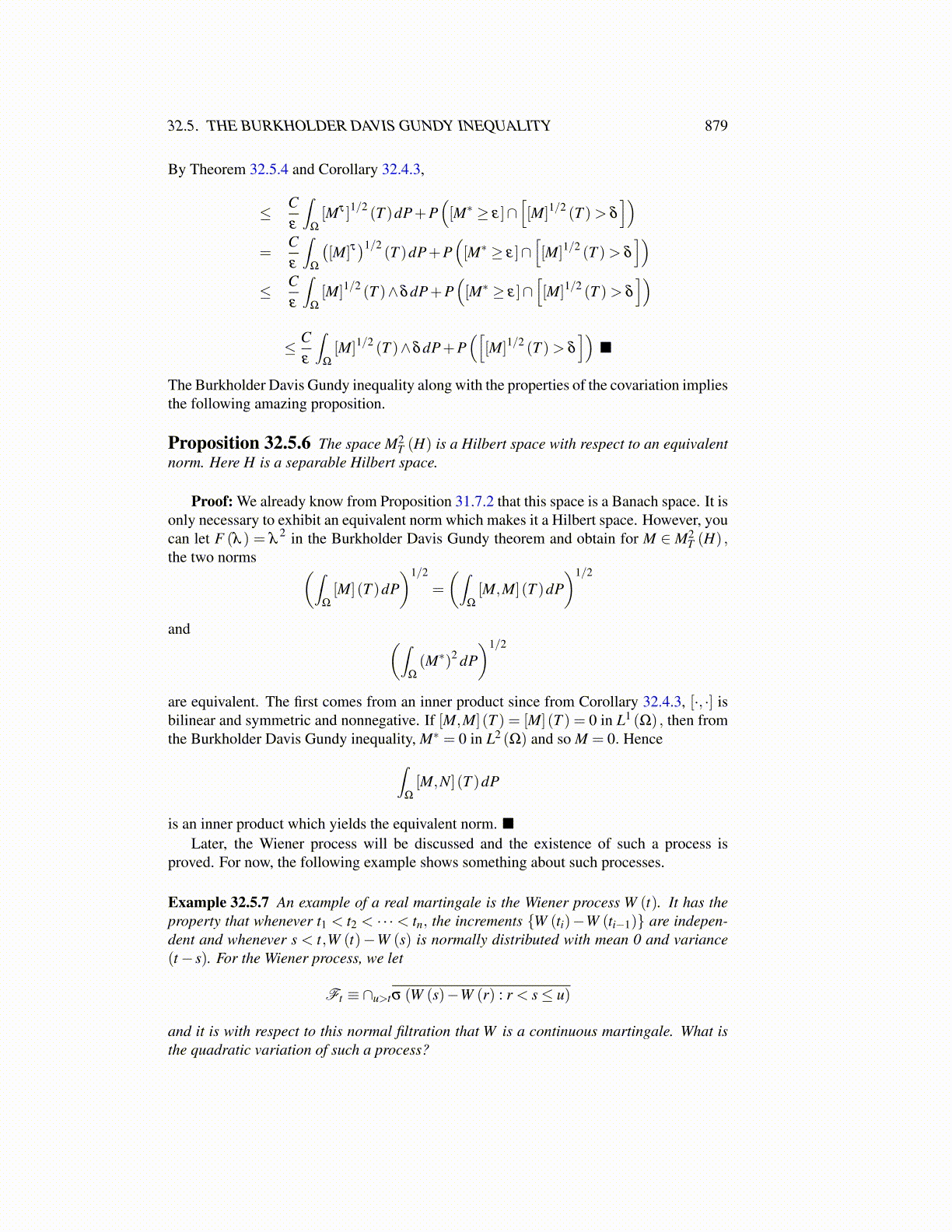
32.5. THE BURKHOLDER DAVIS GUNDY INEQUALITY 879
By Theorem 32.5.4 and Corollary 32.4.3,
≤ Cε
∫Ω
[Mτ ]1/2 (T )dP+P([M∗ ≥ ε]∩
[[M]1/2 (T )> δ
])=
Cε
∫Ω
([M]τ
)1/2(T )dP+P
([M∗ ≥ ε]∩
[[M]1/2 (T )> δ
])≤ C
ε
∫Ω
[M]1/2 (T )∧δdP+P([M∗ ≥ ε]∩
[[M]1/2 (T )> δ
])
≤ Cε
∫Ω
[M]1/2 (T )∧δdP+P([
[M]1/2 (T )> δ
])■
The Burkholder Davis Gundy inequality along with the properties of the covariation impliesthe following amazing proposition.
Proposition 32.5.6 The space M2T (H) is a Hilbert space with respect to an equivalent
norm. Here H is a separable Hilbert space.
Proof: We already know from Proposition 31.7.2 that this space is a Banach space. It isonly necessary to exhibit an equivalent norm which makes it a Hilbert space. However, youcan let F (λ ) = λ
2 in the Burkholder Davis Gundy theorem and obtain for M ∈ M2T (H) ,
the two norms (∫Ω
[M] (T )dP)1/2
=
(∫Ω
[M,M] (T )dP)1/2
and (∫Ω
(M∗)2 dP)1/2
are equivalent. The first comes from an inner product since from Corollary 32.4.3, [·, ·] isbilinear and symmetric and nonnegative. If [M,M] (T ) = [M] (T ) = 0 in L1 (Ω) , then fromthe Burkholder Davis Gundy inequality, M∗ = 0 in L2 (Ω) and so M = 0. Hence∫
Ω
[M,N] (T )dP
is an inner product which yields the equivalent norm. ■Later, the Wiener process will be discussed and the existence of such a process is
proved. For now, the following example shows something about such processes.
Example 32.5.7 An example of a real martingale is the Wiener process W (t). It has theproperty that whenever t1 < t2 < · · · < tn, the increments {W (ti)−W (ti−1)} are indepen-dent and whenever s < t,W (t)−W (s) is normally distributed with mean 0 and variance(t− s). For the Wiener process, we let
Ft ≡ ∩u>tσ (W (s)−W (r) : r < s≤ u)
and it is with respect to this normal filtration that W is a continuous martingale. What isthe quadratic variation of such a process?